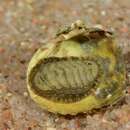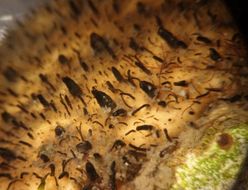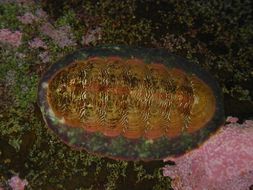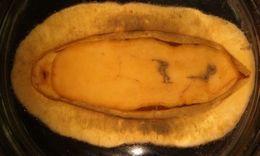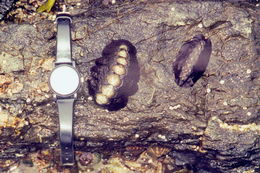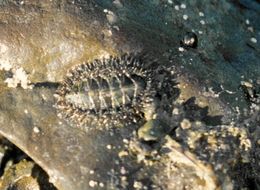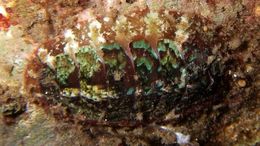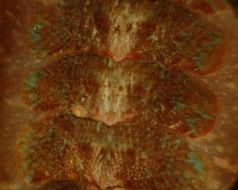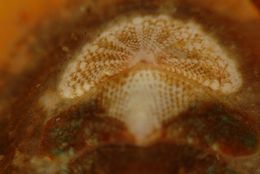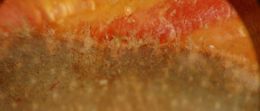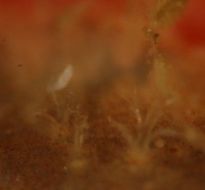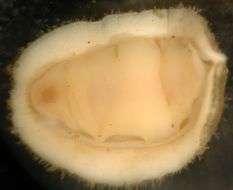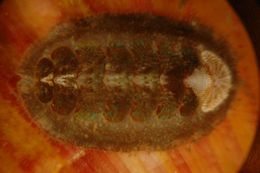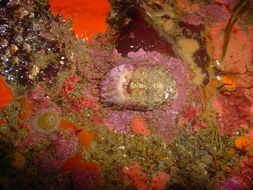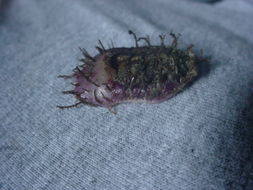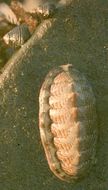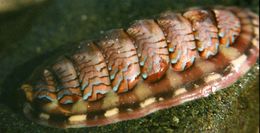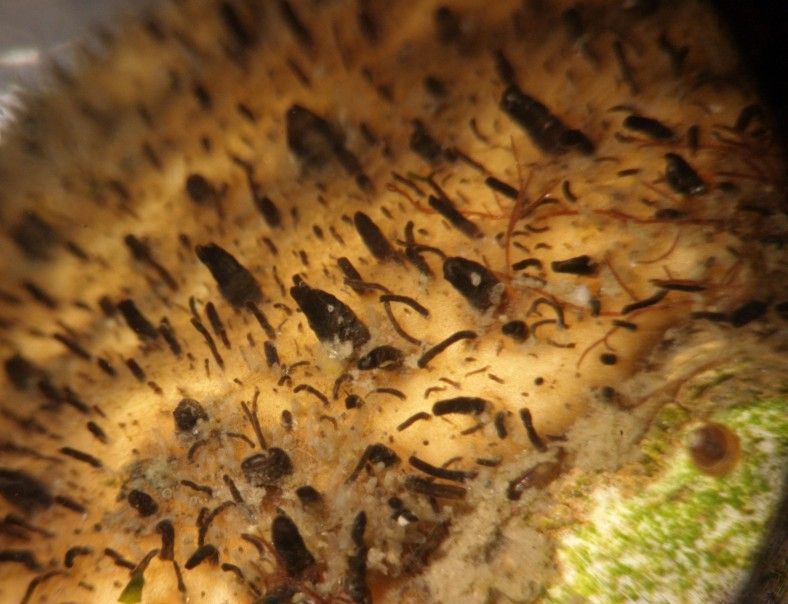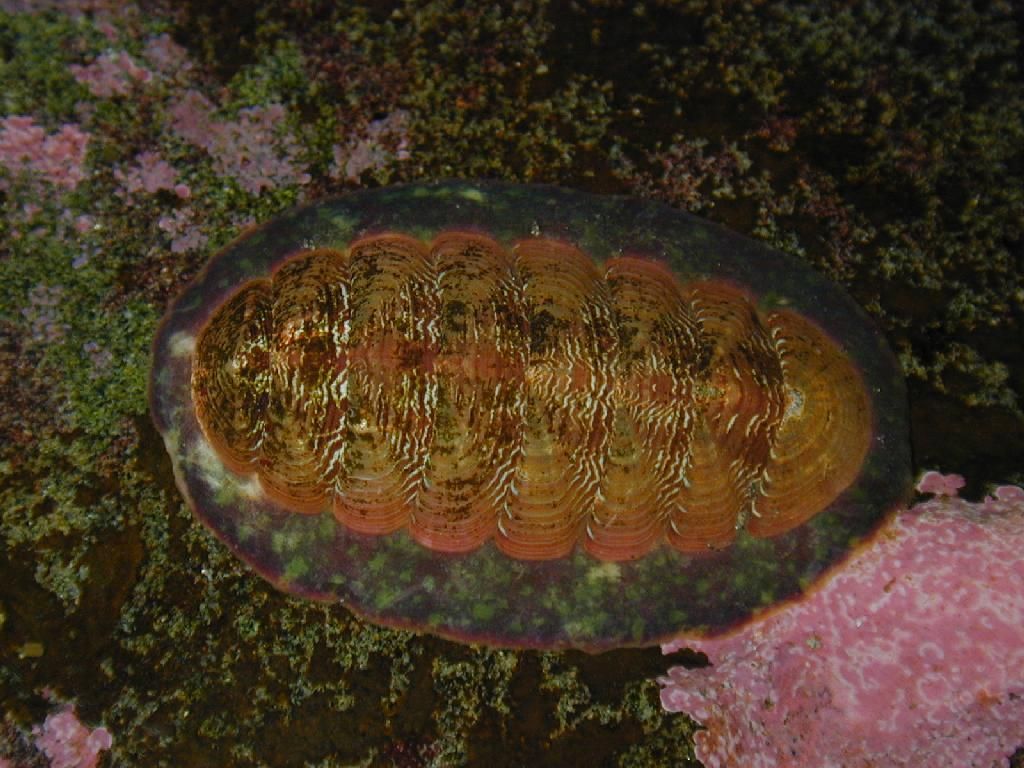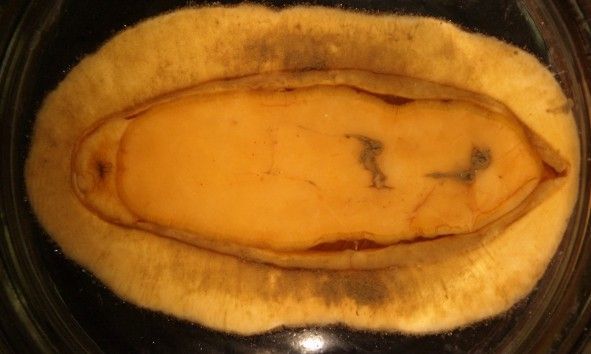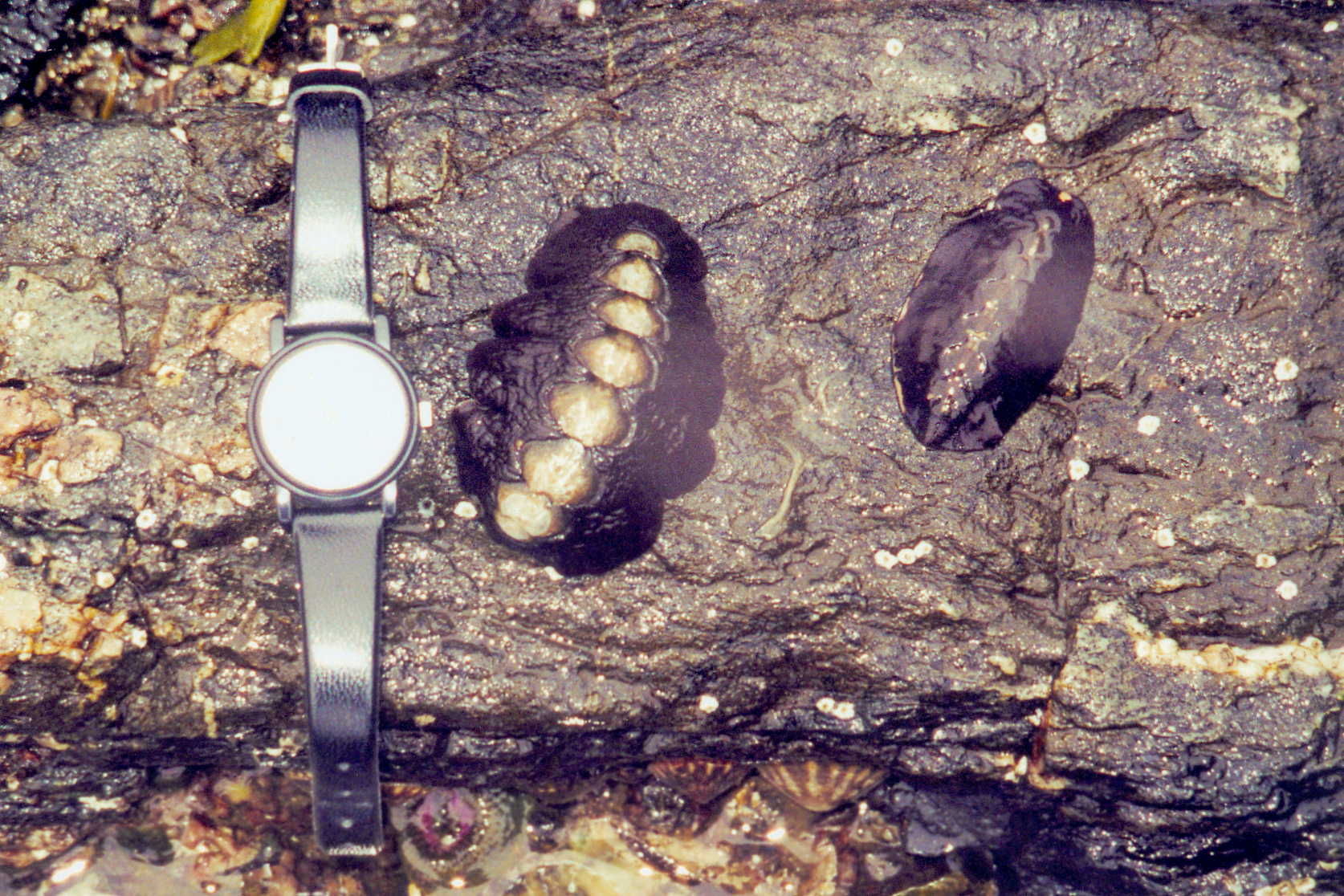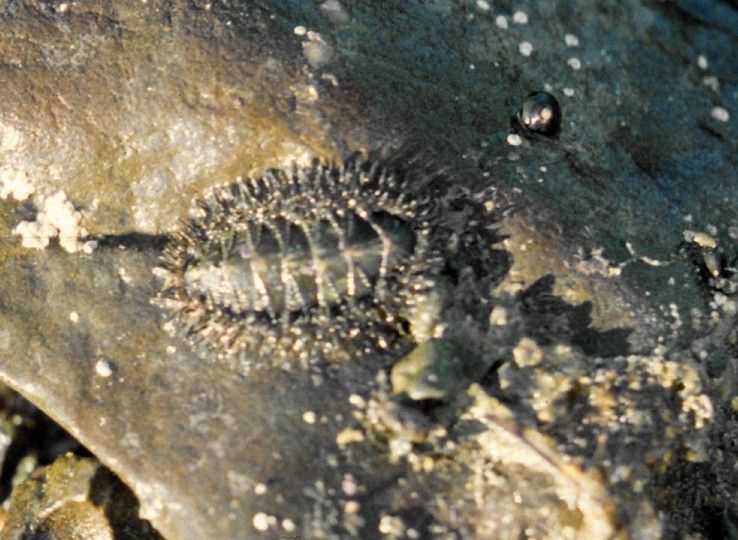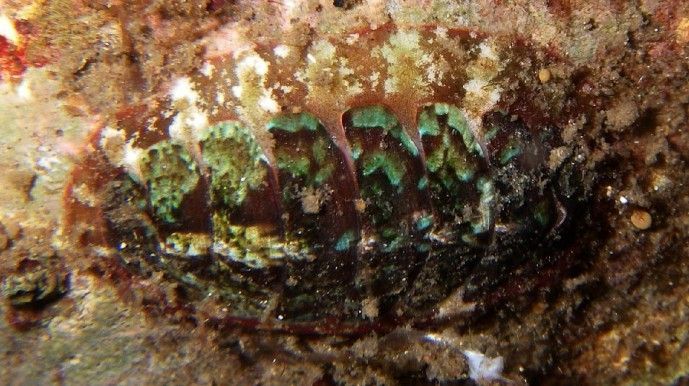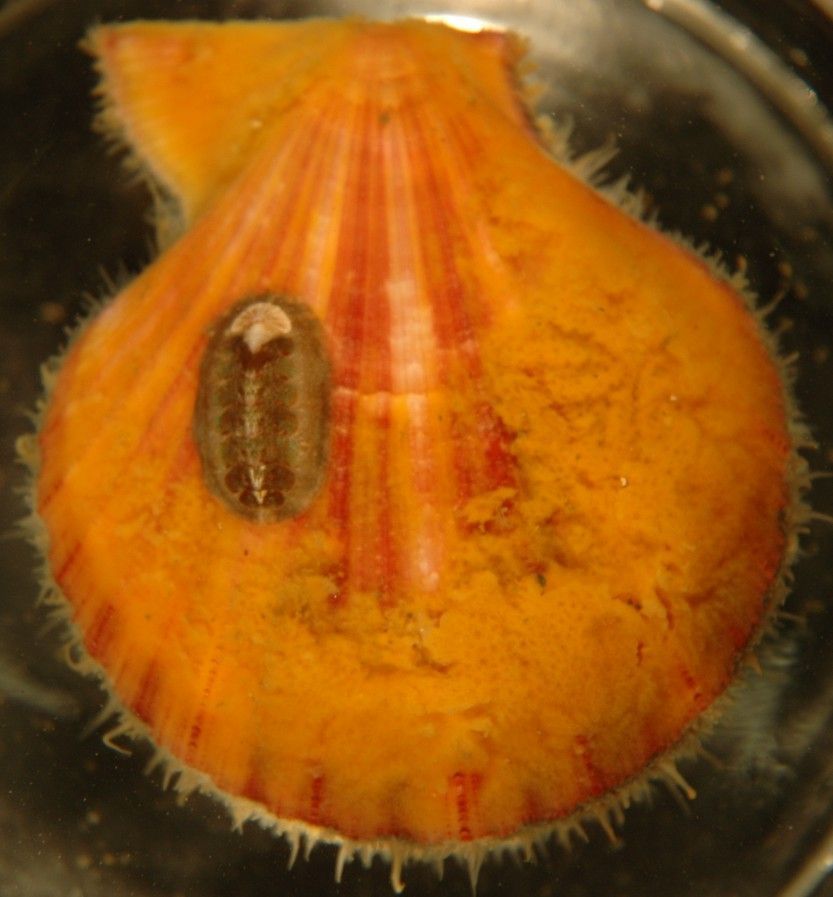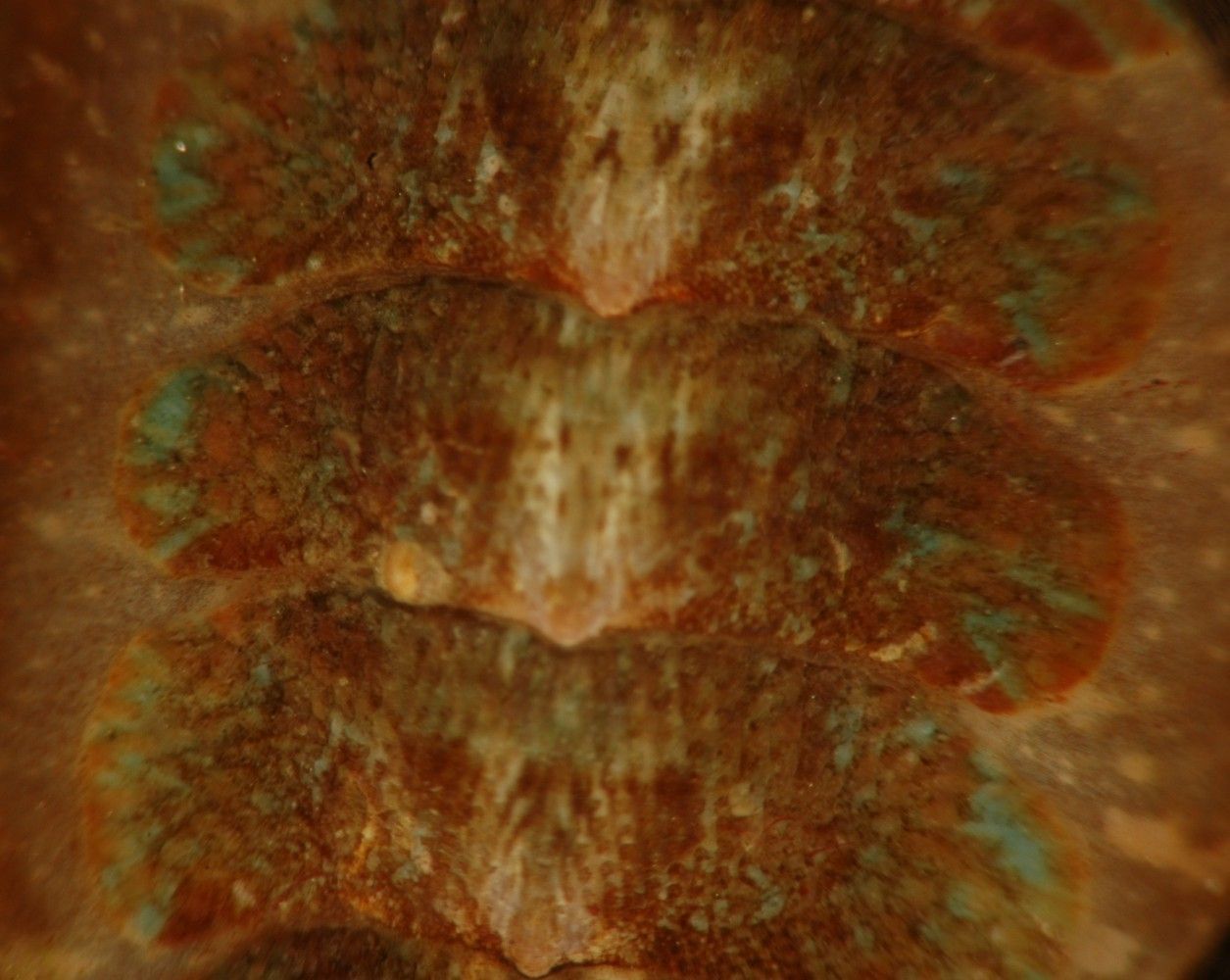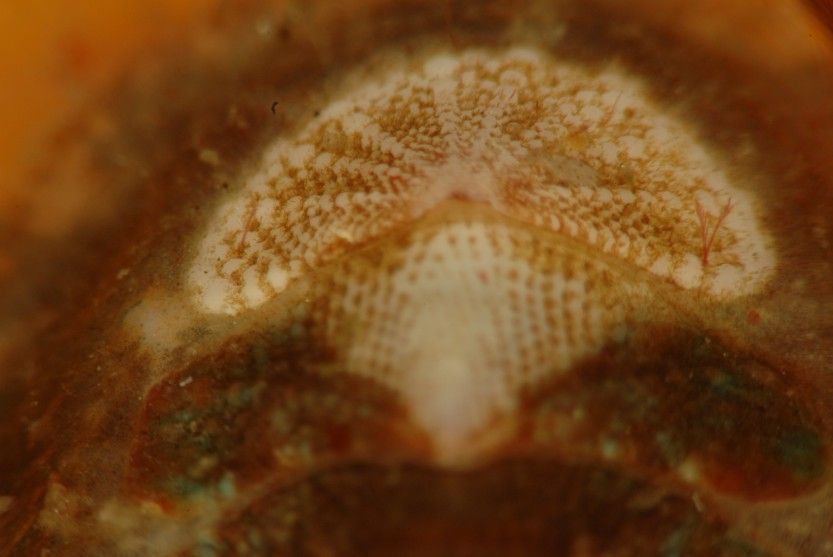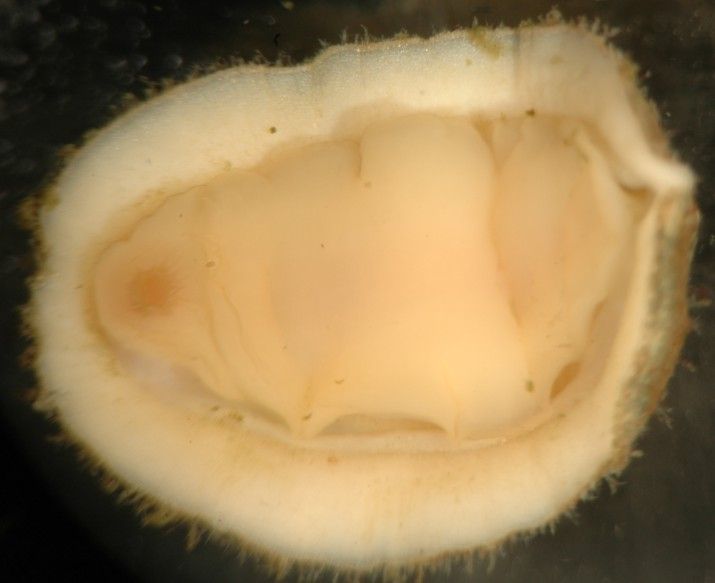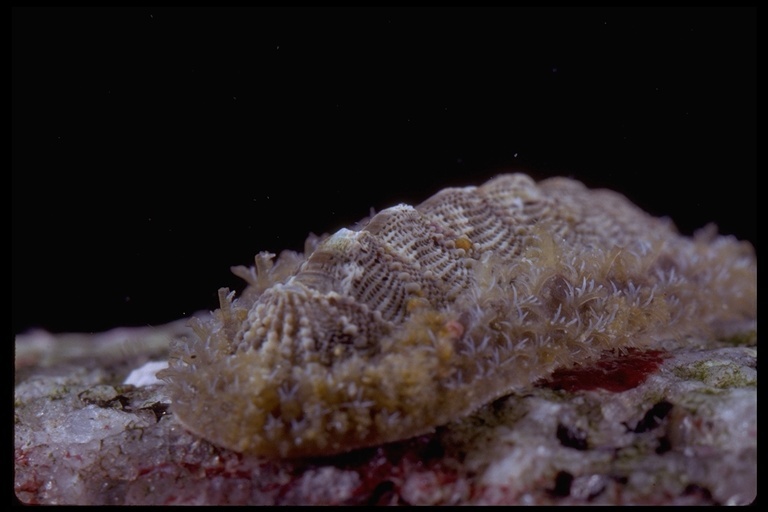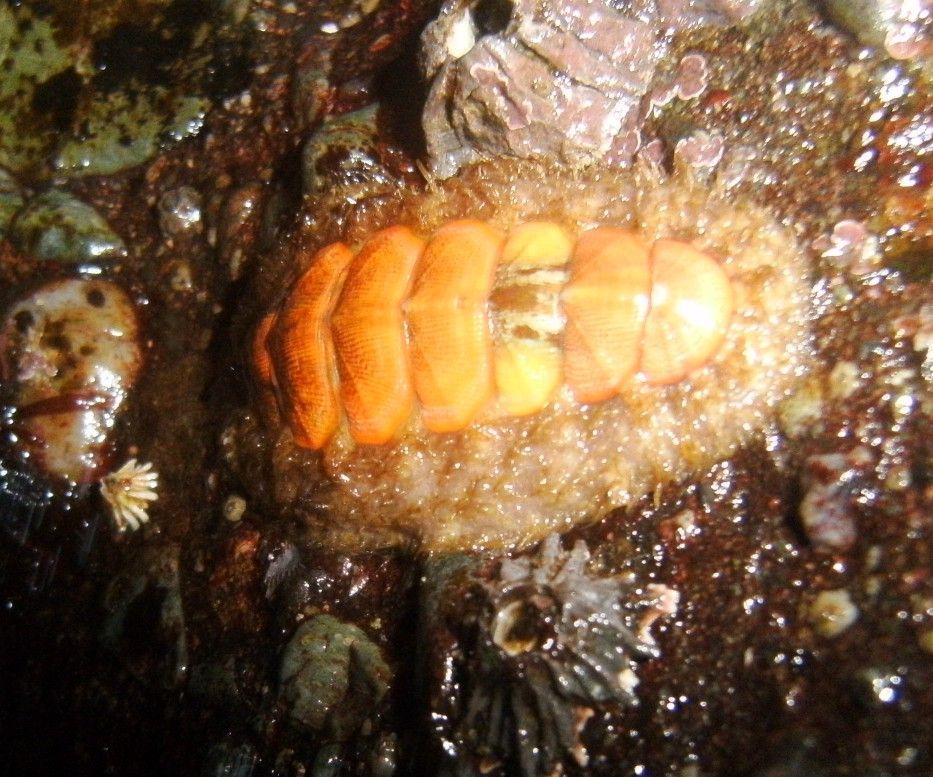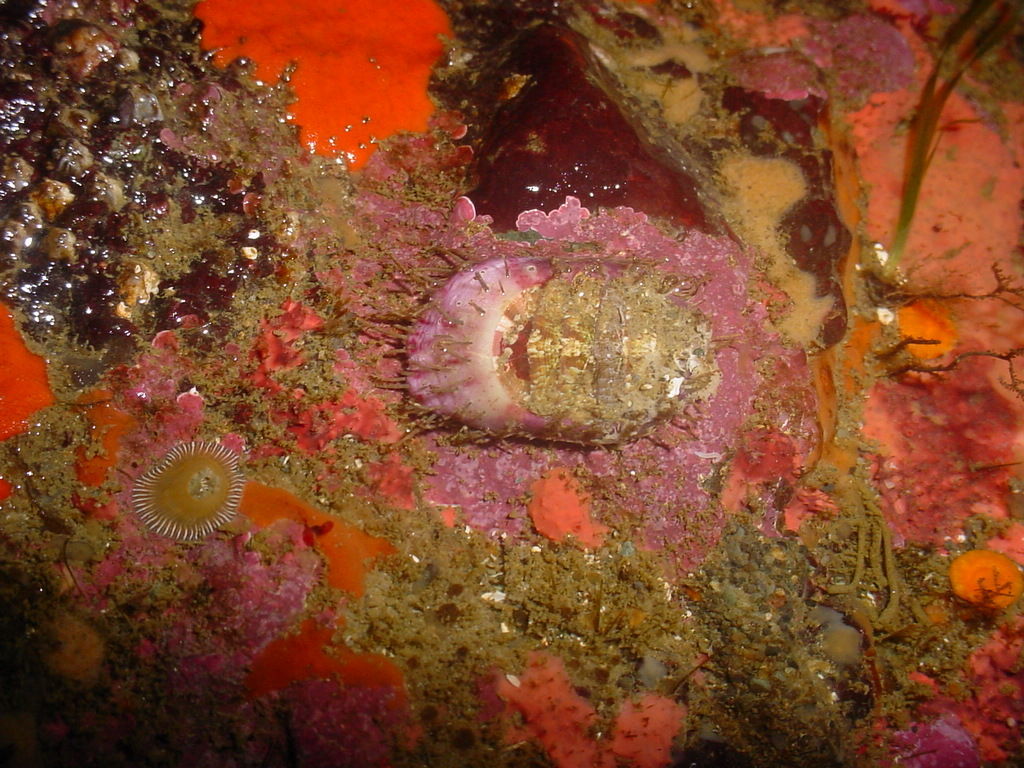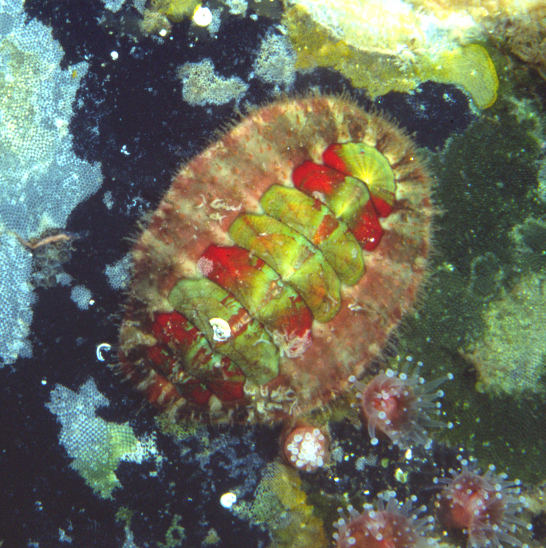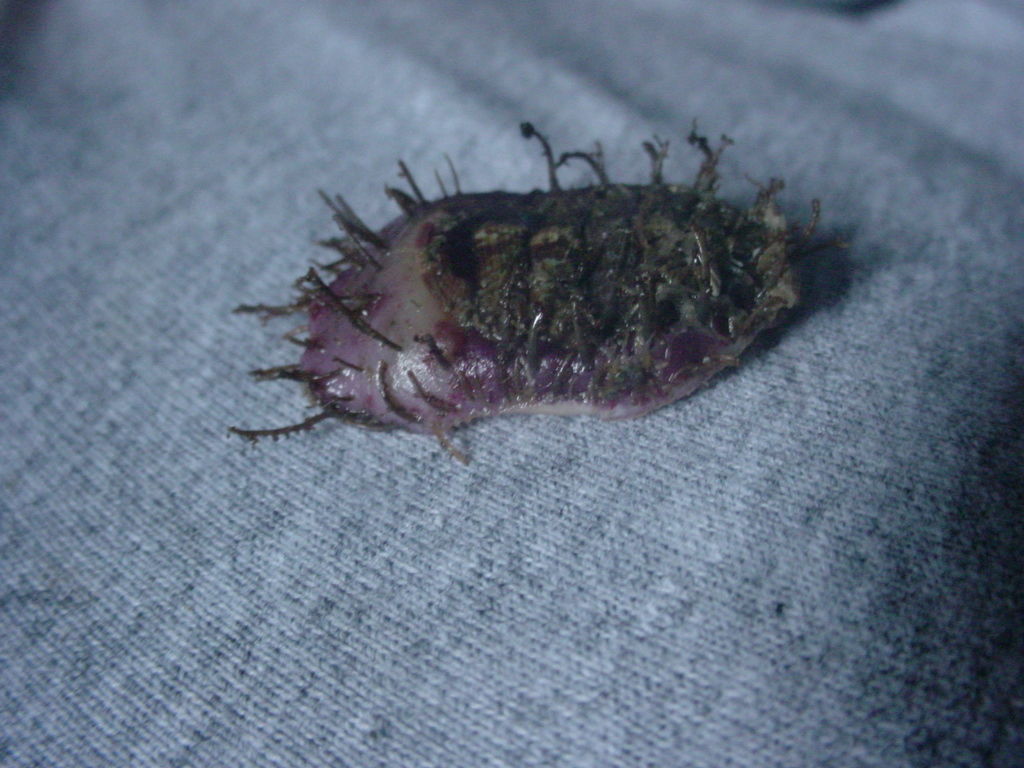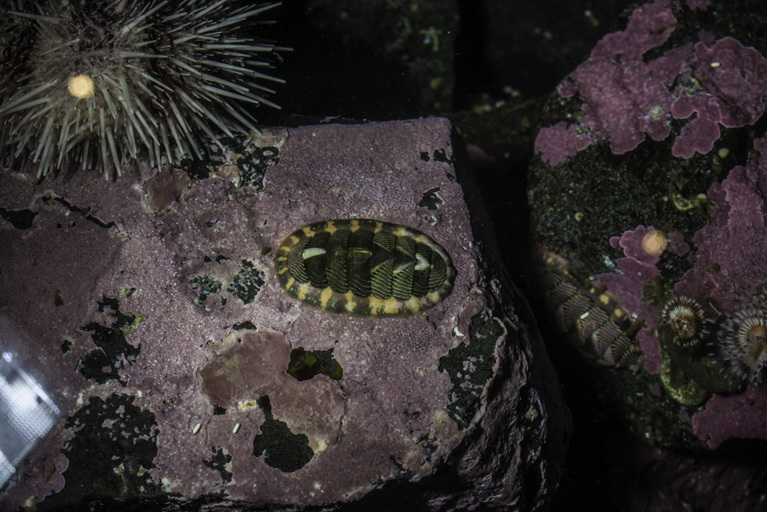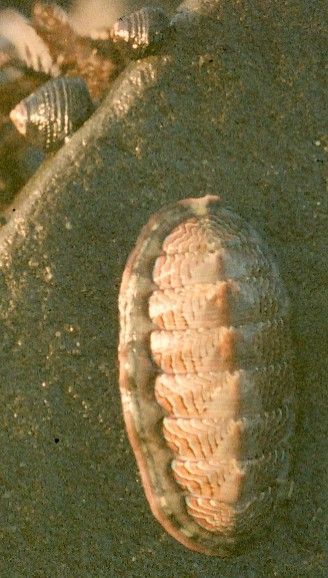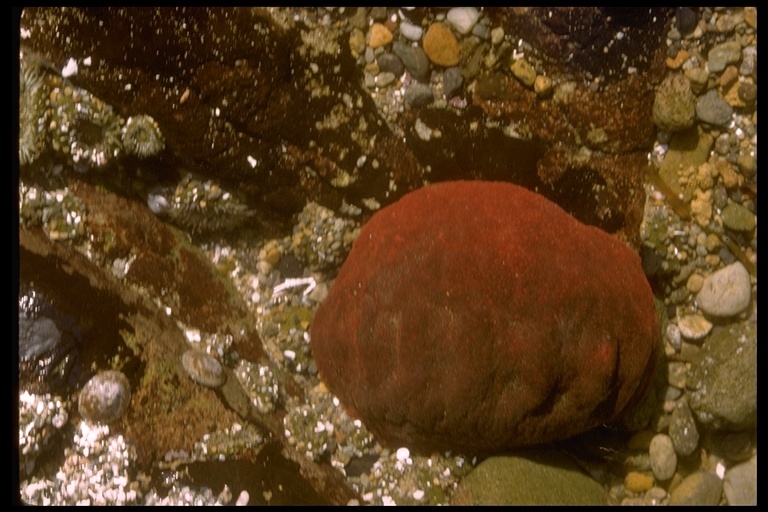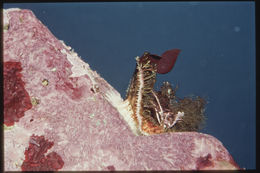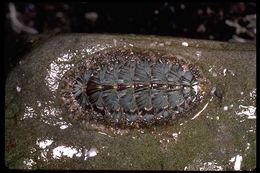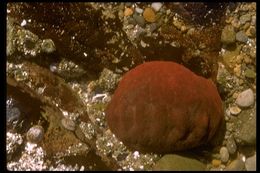-
This closeup of the mantle of the individual above shows the strange yellowish background color of the mantle combined with the familiar thick, strap-like hairs characteristic of this species. The limpet is visible on the edge of the algae-encrusted plate at the bottom right, and a mucus tube of a polychaete worm is visible at the margin between the plate and the mantle. A few strands of red algae intertwine among the mantle hairs.
-
Tonicella insignis--underwater photo (Photo by: Aaron Baldwin)
-
Here is a view of the underside of the above individual. The mouth is clearly visible on the left. The large central region is the foot, which has several strands of mucus on it. The ring around the foot is the mantle cavity, which contains the gills. The outer ring of tissue is the underside of the mantle (girdle), which is held down fairly tightly against the substrate.
-
Katharina tunicata Black Chiton Katharina tunicata; taken at low tide at Swirl Rocks Photo by: Ryan Lunsford 2002
-
Mopalia muscosa under a rock at San Simeon, CA. Length is about 3 cm. Head and plate 1 are to the left. (Photo by: Dave Cowles, 1995)
-
Dendrochiton flectens, underwater photo (Photo and identification by: Aaron Baldwin)
-
This larger view shows how the chiton is grazing the sponge off the scallop.
-
This closeup shows the detail on the plates, plus a view of some of the girdle.
-
The anterior two plates of this individual have a lot of white.
-
This closeup of some of the sparse girdle hairs, along the lateral margin of the girdle, shows how the larger hairs branch from the base. The orange/pink background is the sponge and scallop that the chiton is crawling on. Other than on these lateral areas and in some areas along the edges of the plates the girdle hairs are quite sparse.
-
This closeup is of some girdle hairs which are not right at the margin of the girdle.
-
The underside of the girdle of this species is not orange.
-
Mopalia hindsii feeding on the sponge Myxilla incrustans which is growing on the shell of the scallop Chlamys hastata. (Photo by: Dave Cowles, July 2007)
-
1999 California Academy of Sciences
CalPhotos
-
Mopalia ciliata, about 3 cm long, under a rock overhang at Cape Flattery (Photo by: Dave Cowles, July 2010 )
-
2011 California Academy of Sciences
CalPhotos
-
The pale-colored veil is clearly visible in this photo taken in a cave at Cape Flattery. Dave Cowles July 2004
-
2006 California Academy of Sciences
CalPhotos
These chitons are omnivorous. This individual could well have been feeding on the adjacent bryozoan.
-
(Placiphorella velata, about 3 cm long, in cave at Cape Flattery. Anterior veil is to the left) (Photo by: Dave Cowles July 2004)
-
2016 California Academy of Sciences
CalPhotos
-
This Tonicella lineata was under a rock, seen in early morning light. Note the variation in plate color compared to above picture. This would conform to the classic Tonicella lineata (see note above) Photographed at San Simeon, CA by Dave Cowles. About 3-4 cm long.
-
1999 California Academy of Sciences
CalPhotos
lined chiton
-
Another individual. Dave Cowles, San Simeon, CA 4-97
-
2002 California Academy of Sciences
CalPhotos

